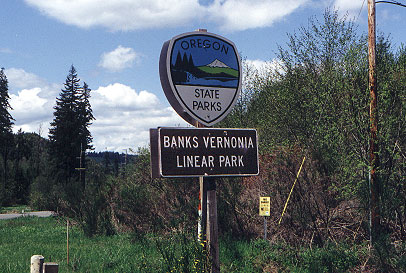
Winding our way into the up-country, the roads are getting narrower. Our printed guide says to watch for the third trestle as a guidepost. The trestle is a beautifully engineered timber arch that spans 120 feet over the narrow canyon road, but stops abruptly mid-air before reaching the near bank. We park here and hike up the steep hillside about a quarter of a mile to an abandon, shaded road cut that roughly parallels the canyon below.
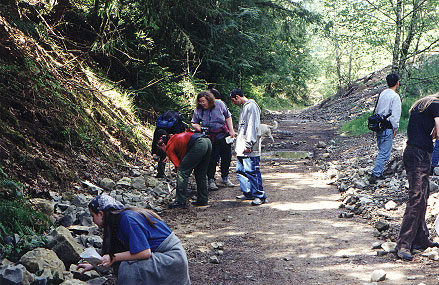
The cut has exposed the weathering face of marine sedimentary beds and talus. The students immediately begin finding interesting marine fossil evidences in these tuffaceous siltstones, sandstones, and mudstones. The talus slope is steep and not easily climbed. Rocks roll easily down-slope and are hazardous once they start moving, so we are cautioned to watch what we are doing.

I took these two pictures at the face of the fine silt stone beds as I cautiously moved across the top of the talus slope. As the photos show, the patterns of siltstone layers are broken by angular, vertical, and nearly horizontal veins. These two-to-four-inch thick mudstone-filled faults branch and run in many inexplicable directions. Because of the siltstone particle size, Melinda suggests that this deposit was perhaps formed at the top of a continental slope. This is called the Keasey Formation and is 25 to 30 m.a.
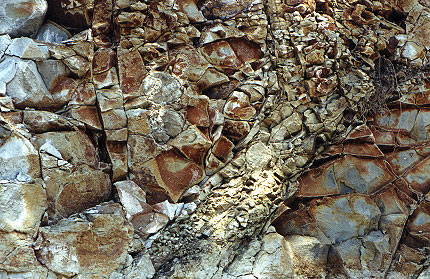
I picture a tightly compacted bed of sand, perhaps slightly cemented, being disturbed by shaking such as an earthquake might do. The compressed, wet mass breaks apart rather than flowing, leaving faults through the bed which are filled in with muddy waters and silt. It would be interesting to do laboratory analysis on the sandstones.
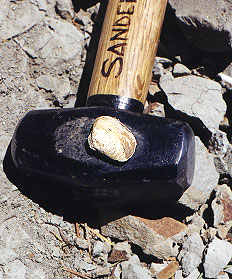
With luck, I have found a whole bivalve perhaps closely related to Nuculana. It is about 3.25 cm long, and the shell is almost perfectly intact, and filled with a fine muddy sand concretion. Other students find remains of gastropods, scaphopods, and bivalves. These finds are related to medium-shallow marine habitat such as mud burrows, casts of shells, and molds of marine criter shells.
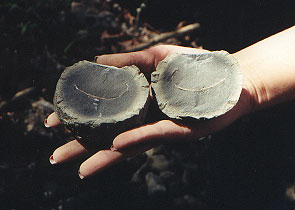
This is a very interesting place. Some students have found round sandstone shot-put sized concretions. Here a student has broken one to show the ball has formed around half of a bivalve, a clamshell. The fine grains of sand and silt have been hardened chemically into a more weather resistant matrix by the calcium carbonate that has been leached outward from the shell center in a spherical pattern. Some of the spheres are taken home to be cracked with larger tools.